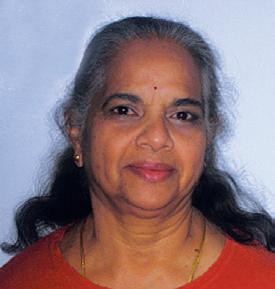
2 minute read
A place for prayer?
from 2012-11 Sydney (2)
by Indian Link
An often debated question within our lives is the need for prayer and worship in everyday life
BY SARoJA SRINIVASAN

Prayer is the modern brain’s means of connecting to more powerful ancestral states of consciousness,” says Gregg Jacobs, an assistant professor of psychiatry at Harvard Medical School. With meditative states, people seem to turn off what Professor Jacobs calls “the internal chatter” of the higher conscious brain. Perhaps this gives a means of solace to a turbulent mind.
The question that is often debated in a number of family and social groups is the need for temples, prayer and rituals of worship. The argument becomes very heated with followers of each argument taking a firm and often emotional stance.
There is a need to explore the place for these long-held beliefs. They are beliefs in the sense there seem no ‘objective’ evidence, that is, statistically verified ‘data’ that is reliable and can be duplicated. This is the preferred argument by those who hold strongly against such beliefs. The pro-belief group hold steadfastly that their proof and evidence is subjective experience and reliable, and needs no further verification.
Let us accept the fact that a vast number of people all over the world cater to the view that prayer, places of worship and rituals of worship are important in their lives. On exploring the need or reason for such beliefs and practices we can see how they would benefit our daily lives. Rituals seem to offer a good way of compliance, the protocols setting a reliable cue for repeated practice. In a world of uncertainties, everyone looks to some predictability and comfort in being able to remain positive and optimistic in the face of adversity. When one also realises there are many unknowns in the equation of life, any possible way we can predict it becomes a tool. Seeking divine grace would appear to be one such avenue.
Several years ago, the Institute of Noetic Sciences in California, published the results in a well-controlled study testing the validity that prayer can effect changes in medical conditions, even when it is done anonymously from afar. Significant improvements were noticed in patients who had been prayed for by several unknown people, as compared to those for whom this did not happen. This is very similar to beliefs in the Indian culture where many rituals and prayers are conducted for those who suffer from serious conditions, even when they are not present, and improvements have been noted.

More recently, there have been discussions about a ‘God gene’. In fact, about three years ago a book called Final Freedom created quite a stir - its author says that we can obtain proof of the reality of the existence of a higher power by following a single moral law offering its own proof, “that God responds directly to an act of perfect faith with individual intervention into the natural world, correcting human nature by a change in natural law, altering consciousness and human ethical perception beyond all natural evolutionary boundaries”. Of course this is intended to be understood metaphorically where ‘death’ is ignorance and ‘life’ is knowledge’. Several such interpretations are abundant in many wisdom traditions including ancient Vedic literature.
In particular this concept is not alien in Hindu, the Sanatana Dharma thinking which is succinctly illustrated in the prayer Asato ma sadgamaya Tamaso ma Jyotir gamaya and Mrityo ma amritham gamaya.
Translated it reads: Lead us from ignorance to knowledge, from darkness to light and from death to immortality. The same metaphors are validated again and again from gaining the understanding of the universal Dharma principle of selfknowledge, understanding the true indestructible nature of our self. It seems even those who have been sceptical are moving towards accepting that there is a place for prayer and acts of faith in our daily life that can enrich us and help us to live through life’s many vicissitudes.











